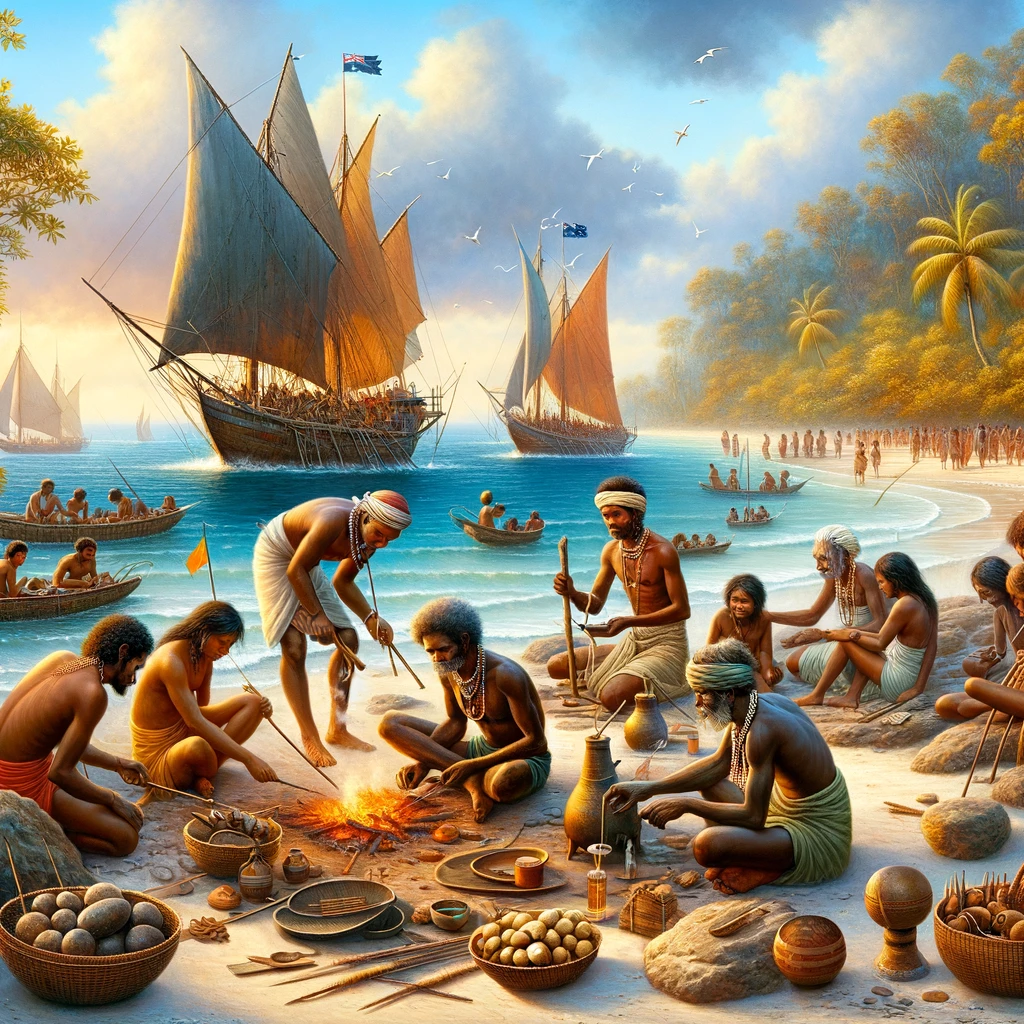The history of the Makassan contact with Australia stands as a fascinating chapter in the annals of pre-colonial international relations, underscoring centuries of interaction between Southeast Asian sailors and Indigenous Australians prior to European settlement. This article delves into what is known about these interactions, their impact, and the eventual cessation of this early example of globalization.
Early Encounters and Cultural Exchange
Originating from the region around Sulawesi in present-day Indonesia, the Makassans set sail to the northern coasts of Australia in search of trepang, also known as sea cucumber. This marine invertebrate was highly prized in Chinese markets for its culinary and medicinal properties, creating a lucrative trade route that spanned continents. The first recorded Makassan contact with Australia is believed to have occurred centuries before European exploration, possibly as early as the 16th century, although evidence suggests that interactions could have begun even before this period.
These voyages led to significant cultural exchanges between the Makassans and Indigenous Australian communities. The Makassans introduced metal tools, canoes, and the process of boiling trepang, which became integrated into local Indigenous cultures. Linguistic exchanges were also notable, with several Makassarese words finding their way into Aboriginal languages, particularly those in the Northern Territory. Moreover, the presence of tamarind trees, Makassan graves, and artifacts within Australia serves as a testament to this prolonged contact.
The Impact of Makassan Visits
The Makassan visits had profound implications for Indigenous societies. They facilitated not only the exchange of goods but also of ideas, technologies, and practices. This interaction was characterized by mutual respect and benefit, differing markedly from the often violent and exploitative nature of later European colonization. Aboriginal art, for instance, depicts praus and other Makassan influences, signifying the depth of this cultural interchange.
The End of an Era
The cessation of Makassan visits to Australia in the late 19th century marked the end of this significant chapter in the history of international trade and cultural exchange. Several factors contributed to this decline. The British and Dutch colonial authorities began to impose stringent regulations and licensing requirements on the trepang industry, undermining its economic viability. Moreover, the imposition of borders and the assertion of colonial control disrupted the previously fluid interaction between the Makassans and Indigenous Australians.
The final Makassan voyages are thought to have occurred around the 1900s, after which the newly established Australian government implemented policies that effectively ended this centuries-old interaction. Despite this, the legacy of Makassan contact with Australia endures, embedded in the cultural and historical fabric of both the Indigenous communities of northern Australia and the people of Sulawesi.

The story of Makassan contact with Australia illuminates the rich tapestry of human history, showcasing an era of globalization long before the term was coined. It reminds us of the complex interconnections that have always existed between disparate cultures and geographies. While the Makassan voyages may have ceased, their impact lingers, offering valuable insights into the nature of cross-cultural interaction and the potential for mutual respect and benefit in international relations. This chapter of history, though often overlooked, serves as a powerful testament to the possibilities of peaceful coexistence and cooperation across cultural divides.
